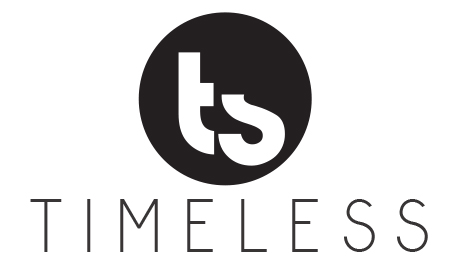
by timelessnc | Nov 9, 2018 | Retirement Income Planning, Social Security
Social Security recently announced that the cost-of-living adjustment (COLA) in 2019 will be the highest since 2012. Next year’s benefit increase of 2.8 percent is significantly higher than 2018’s 2 percent raise. In fact, other than 2012, there hasn’t been an increase of more than 2 percent in the past 10 years. There weren’t any COLA increases in 2010, 2011 or 2016.1
The 2019 COLA may be welcome news for seniors who are struggling to keep up with rising costs for groceries, energy and much more. Social Security offers COLA increases to benefits to help recipients keep up with inflation. The COLA amount is based on a broad version of the consumer price index (CPI).
Why the COLA May Not Be Sufficient for Seniors
An increase in Social Security benefits is always good news. However, there are a few reasons why even a 2.8 percent increase may not be enough to help seniors keep up with rising prices.
First, for many retirees, Social Security makes up only a portion of their overall income. Since the COLA increase only applies to Social Security benefits, it doesn’t mean retirees are getting an overall increase in income. If you receive income from a pension or investment distributions, you may need to take other steps to keep up with inflation.
There’s also debate about how Social Security examines costs such as housing and health care to calculate COLA. Social Security uses the CPI-W, or consumer price index for urban workers, to estimate COLA.
The problem is that the CPI-W tracks costs for workers, not for seniors. Many retirees face different costs than the average worker faces. For instance, retirees may have increased health care and housing costs. The CPI-W doesn’t weight those areas heavily, so it may not be an accurate gauge for retirees.
Tips to Keep Up With Inflation
The good news is there are other steps you can take to manage your exposure to inflation and protect yourself against rising costs. One is to maintain a balanced approach and not become too conservative in your strategy. You’ll likely need some level of growth. That often means taking risk.
However, you may want to talk to a financial professional about tools that can generate increasing income and minimize risk exposure. For example, you can use an annuity to generate a guaranteed* income stream and potentially increase over time. Often, the annuity is guaranteed* for life, regardless of market performance.
You also may want to look at long-term care insurance with an inflation protection rider. Long-term care can be a sizable expense, and it usually isn’t covered by Medicare. Also, costs are rising every year, often at a higher rate than inflation. An insurance policy in which the benefits are aligned with inflation could help you keep up with rising costs.
Ready to develop your retirement inflation strategy? Let’s talk about it. Contact us at Timeless Solutions today. We can help you analyze your needs and implement a plan. Let’s connect soon and start the conversation.
1https://www.ssa.gov/cola/
*Guarantees, including optional benefits, are backed by the claims-paying ability of the issuer, and may contain limitations, including surrender charges, which may affect policy values.
Licensed Insurance Professional. This information is designed to provide a general overview with regard to the subject matter covered and is not state specific. The authors, publisher and host are not providing legal, accounting or specific advice for your situation. By providing your information, you give consent to be contacted about the possible sale of an insurance or annuity product. This information has been provided by a Licensed Insurance Professional and does not necessarily represent the views of the presenting insurance professional. The statements and opinions expressed are those of the author and are subject to change at any time. All information is believed to be from reliable sources; however, presenting insurance professional makes no representation as to its completeness or accuracy. This material has been prepared for informational and educational purposes only. It is not intended to provide, and should not be relied upon for, accounting, legal, tax or investment advice. This information has been provided by a Licensed Insurance Professional and is not sponsored or endorsed by the Social Security Administration or any government agency.
The material is not intended to be legal or tax advice. The insurance agent can provide information, but not advice related to social security benefits. Clients should seek guidance from the Social Security Administration regarding their particular situation. The insurance agent may be able to identify potential retirement income gaps and may introduce insurance products, such as an annuity, as a potential solution. Social Security benefit payout rates can and will change at the sole discretion of the Social Security Administration. For more information, please consult a local Social Security Administration office, or visit www.ssa.gov
18149 – 2018/10/17

by timelessnc | Aug 29, 2018 | Social Security, Uncategorized
For nearly 80 years, Social Security has been a valuable resource for America’s retirees. The program was created in August 1935 when President Franklin D. Roosevelt signed the Social Security Act.1 The law created an independent governmental agency that would provide lifetime income benefits to retirees, the disabled and their surviving spouses and children.
The agency was originally called the Social Security Board but was later renamed the Social Security Administration (SSA). The SSA began collecting payroll taxes in 1937 and paid out the first lump-sum benefit to a Cleveland motorman the same year. He retired one day after paying a 5-cent payroll tax, and he received a retirement benefit of 17 cents.1
In 1940 the SSA started making monthly payments to retirees age 65 and older. While the benefits and eligibility requirements have changed slightly over the years, Social Security operates today much like it did in the beginning. Below are common questions and answers about Social Security and the role it may play in your retirement:
What does Social Security cover?
As of December 2017, Social Security provided benefits to more than 45 million retirees and dependents, over 10 million disabled Americans and dependents, as well as 6 million survivors. Retirees account for 72 percent of benefits; disabled workers account for 16 percent, and the remainder of benefits are paid to survivors.2
Nearly 90 percent of retirees receive Social Security benefits.2 Research indicates that many seniors rely on Social Security for a substantial portion of their income. Among retirement benefit recipients, half of married couples and 71 percent of singles say that Social Security represents more than half of their income.2
When can you file for Social Security?
You can file for Social Security as early as age 62, although you could see a benefit reduction of as much as 35 percent if you file at that time. To avoid a reduction, you need to wait until your full retirement age (FRA) to file. Most people reach their FRA between their 66th and 67th birthdays.3
You don’t have to file at your FRA, though. In fact, you can delay your filing all the way to age 70. Social Security offers an 8 percent benefit credit for every year that you wait after your FRA. If your FRA is 66 and you wait until age 70 to file, that’s a total permanent benefit increase of 32 percent.4
Will Social Security run out of money?
Much has been made of the prospect that Social Security may run out of money. While Social Security won’t disappear anytime soon, it’s true that the program faces some serious financial challenges. In 2020 the SSA will start paying out more in benefits each year than it collects in payroll taxes. That means it will have to dip into the trust fund, which is projected to be depleted by 2034.5
Even after the trust fund is gone, however, the program will continue to collect taxes to fund benefits. Experts estimate that with benefit cuts, perhaps as much as 21 percent, the program could remain solvent through 2090.5
Ready to plan your Social Security strategy? Let’s talk about it. Contact us today at Timeless Solutions. We can help you analyze your needs and develop a plan. Let’s connect soon and start the conversation.
1https://www.ssa.gov/history/briefhistory3.html
2https://www.ssa.gov/news/press/factsheets/basicfact-alt.pdf
3https://www.ssa.gov/planners/retire/agereduction.html
4https://www.ssa.gov/planners/retire/1943-delay.html
5https://www.fool.com/retirement/2017/05/22/a-big-social-security-change-is-coming-in-2020-and.aspx
Licensed Insurance Professional. This information is designed to provide a general overview with regard to the subject matter covered and is not state specific. The authors, publisher and host are not providing legal, accounting or specific advice for your situation. By providing your information, you give consent to be contacted about the possible sale of an insurance or annuity product. This information has been provided by a Licensed Insurance Professional and does not necessarily represent the views of the presenting insurance professional. The statements and opinions expressed are those of the author and are subject to change at any time. All information is believed to be from reliable sources; however, presenting insurance professional makes no representation as to its completeness or accuracy. This material has been prepared for informational and educational purposes only. It is not intended to provide, and should not be relied upon for, accounting, legal, tax or investment advice. This information has been provided by a Licensed Insurance Professional and is not sponsored or endorsed by the Social Security Administration or any government agency.
The material is not intended to be legal or tax advice. The insurance agent can provide information, but not advice related to social security benefits. Clients should seek guidance from the Social Security Administration regarding their particular situation. The insurance agent may be able to identify potential retirement income gaps and may introduce insurance products, such as an annuity, as a potential solution. Social Security benefit payout rates can and will change at the sole discretion of the Social Security Administration. For more information, please consult a local Social Security Administration office, or visit www.ssa.gov
17846 – 2018/7/30


